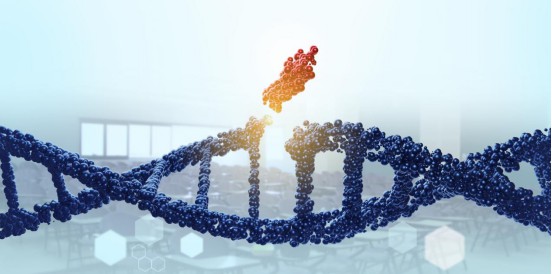* This product is for research use only. Not intended for use in the treatment or diagnosis of disease.
Transgenic technology is a molecular biology technique in which an exogenous or synthetic DNA fragment is integrated into a target organism through a vector and screened over multiple generations to produce individuals that stably express a specific trait.
Gene expression is the entire process by which genes storing genetic information undergo a series of steps to manifest their biological functions. Typical gene expression is the process by which genes are transcribed and translated to produce biologically active proteins. The transcription and post-transcriptional processing of rRNA or tRNA genes to produce mature rRNA or tRNA is also gene expression of rRNA or tRNA, as rRNA or tRNA then has a function in protein translation.

Transgenic research has become a hot topic in the field of molecular biology and has penetrated many fields such as medicine and agriculture. The process of preparing transgenic animals involves several steps such as gene cloning, cell transfection and embryo transfer, and cell transfection technology is an important part of this process.
Cell transfection is the introduction of exogenous nucleic acid molecules such as DNA and RNA into a specific cell using certain methods and pathways and the expression of the target gene to produce a protein molecule with a specific function. The combination of cell transfection and somatic cell cloning is a very effective way to produce transgenic animals. The selection and optimization of a suitable cell transfection method will result in high transfection efficiency, which will indirectly improve the efficiency of transgenic cloning techniques.
It is a recognized problem that primary cells are difficult to transfect. Therefore, selecting a suitable transfection reagent to improve the transfection efficiency of primary cells is an important prerequisite for subsequent screening of positive cells, nuclear transfer experiments and the generation of transgenic animals. At present, the most commonly used transfection methods are lipofection, calcium phosphate transfection, electroporation, virus-mediated transfection and so on.
| Products | Description |
|---|---|
| DNA Transfection Kits | Our products can safely and effectively deliver plasmid DNA and virus DNA into mammalian cells, so that you can get more reliable results in your studies. |
| In Vivo Transfection Reagent | High efficiency, low toxicity transfection reagent for DNA, siRNA, mRNA, and other oligonucleotides. |
| Protein Transfection Kits | Used to directly transfect the protein itself into mammalian cells, instead of transfecting DNA or mRNA encoding the protein of interest. |
| Cell Line Transfection Kits | BOC Sciences provides a variety of validated cell line transfection reagents for the field of life science research to meet the transfection requirements of different types of cell lines. |
| RNA Transfection Kits | BOC Sciences provides proven various types of RNA transfection reagents for life science research to meet different transfection requirements. |
| Electroporation Products | Electroporation, as an increasingly popular physical transfection method, uses high voltage to introduce exogenous nucleic acids into many types of cells (including bacteria and mammalian cells). |